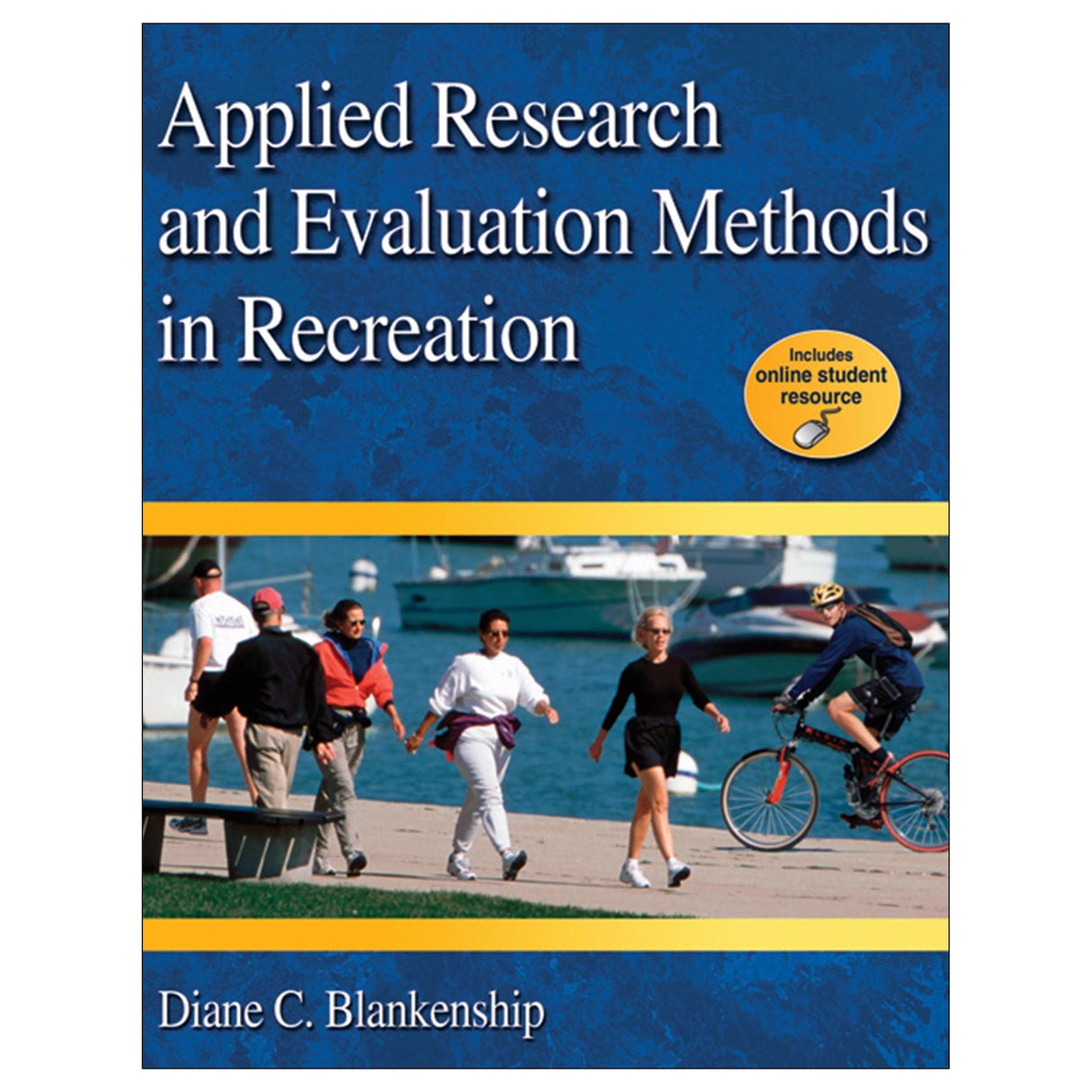Applied Research and Evaluation Methods in Recreation
Author: Diane C. Blankenship
$114.95 CAD
The importance of research and evaluation in the park and recreation industry is becoming increasingly evident as agencies are being asked to justify their existence to a variety of stakeholders. By properly evaluating programs, recreation professionals can better understand the impact of their programs and, with data in hand, justify future investments. Applied Research and Evaluation Methods in Recreation helps students build the competencies they need in order to meet professional standards.
Applied Research and Evaluation Methods in Recreation is the only text that integrates research, evaluation, and basic statistical analysis and links these concepts directly to the recreation field. Using a logical format and accessible language, the book provides students with the foundational knowledge they need in order to move through the research process. They’ll explore the various types of research commonly used in the field (including qualitative, quantitative, and action research) and then learn about the steps involved in designing a project, from developing the research problem, reviewing literature, and identifying variables and hypotheses to defining the population to study, developing the instrumentation plan, and choosing the appropriate data-collection tools. Then they’ll move on to evaluation concepts, including internal validity, data analysis, and reporting methods.
The author’s approach to the material makes this textbook truly unique. Each chapter builds on the previous one to clearly explain the steps of the research process and show how all of the concepts are interrelated. Students will learn not only why the steps and concepts are important but also how they relate specifically to the field. Each chapter closes with features that help students apply what they’ve learned: a case study, exercises, and For the Investigator, an ongoing research project that uses a hypothetical recreation survey to give students realistic practice in recreation research. The text contains many other features that will help students better understand and apply the concepts they’ve learned. Chapter-opening scenarios offer examples of the kinds of research that students might be expected to undertake. Objectives highlight the key points of each chapter, and a glossary offers easy access to definitions of unfamiliar terms. Professional Perspectives sidebars describe real research projects from current professionals with an explanation of the project’s importance to the organization.
Applied Research and Evaluation Methods in Recreation also includes an online student resource (OSR) that provides additional opportunities for students to apply the information they’ve learned. Students will analyze two scholarly articles—one qualitative and one quantitative—throughout the course based on the concepts learned in each chapter. The OSR also contains a case study for each chapter that can be used in assessing students’ comprehension of the concepts covered or as the basis of in-class discussion and exercises to help students better understand and apply the material. In addition, the For the Investigator project appears in the OSR so students can easily download documents and data related to it.
Through the practical approach of Applied Research and Evaluation Methods in Recreation, students will gain the foundational knowledge they need in order too become confident in using their research and evaluation skills to meet the demands of their profession.
Audience
A text for undergraduate and graduate students enrolled in a research or evaluation course in recreation, parks, leisure, and tourism.Chapter 1
Investigative Overview
Foundational Knowledge for Researchers
Benefits of Conducting Research and Evaluation
CAPRA Issues Related to Research and Evaluation
Benefits of Research and Evaluation for the Professional
Conclusion
Learning Aids
Chapter 2
The Research and Evaluation Process
Elements of the Scientific Method of Inquiry
Elements of the Evaluation Research Process
Comparing the Scientific Method of Inquiry Research and Evaluation Research
Steps of the Research Process
Quantitative and Qualitative Study Designs
Conclusion
Learning Aids
Chapter 3
The Research Problem
Defining the Research Problem
Purpose of the Study
Research Questions
Quantitative Research Designs
Qualitative Research Designs
Action Research
Conclusion
Learning Aids
Chapter 4
Review of Literature
What Is a Review of Literature?
Why Conduct a Review of Literature?
How to Find Literature
Synthesizing the Literature
Conclusion
Learning Aids
Chapter 5
Variables and Hypotheses in Study Designs
Relationships
Variables
Hypotheses
Measurement Scales
Conclusion
Learning Aids
Chapter 6
Ethics in Research
Protection From Harm
Confidentiality
Parental Permission
Avoiding Deception
Using All Data
Avoiding Coercion
Conclusion
Learning Aids
Chapter 7
Sampling
Defining the Population
Sampling Techniques
Sampling Issues
Conclusion
Learning Aids
Chapter 8
Instrumentation
Selecting a Leader
Defining the Population
Making an Instrumentation Plan
Kinds of Data
Conclusion
Learning Aids
Chapter 9
Data Collection Tools
Data Collection Tools
Instrument Selection
Instrument Considerations
Validity of the Instrument
Reliability of the Instrument
Conclusion
Learning Aids
Chapter 10
Internal Validity
Review of Validity
10 Threats to Internal Validity
Validity in Qualitative Designs
Reliability
Relationship Between Validity and Reliability
Conclusion
Learning Aids
Chapter 11
Data Analysis
Descriptive Statistics
Range
Standard Deviation
Additional Statistical Analysis
Qualitative Data Analysis
Conclusion
Learning Aids
Chapter 12
The Research Report
Executive Summary
Purpose of the Study
Background
Methods
Results
Recommendations
Conclusion
Learning Aids
Steps of the research process
The importance of research and evaluation in recreation
Instructor guide. The instructor guide contains sample course syllabi, guidelines for the semester-long research project, teaching suggestions, chapter outlines, and exercise questions and answers.
Test package. The test package consists of 273 ready-made multiple-choice and true-and-false questions.
Presentation package. The presentation package includes 168 slides covering all 12 chapters in PowerPoint format.





